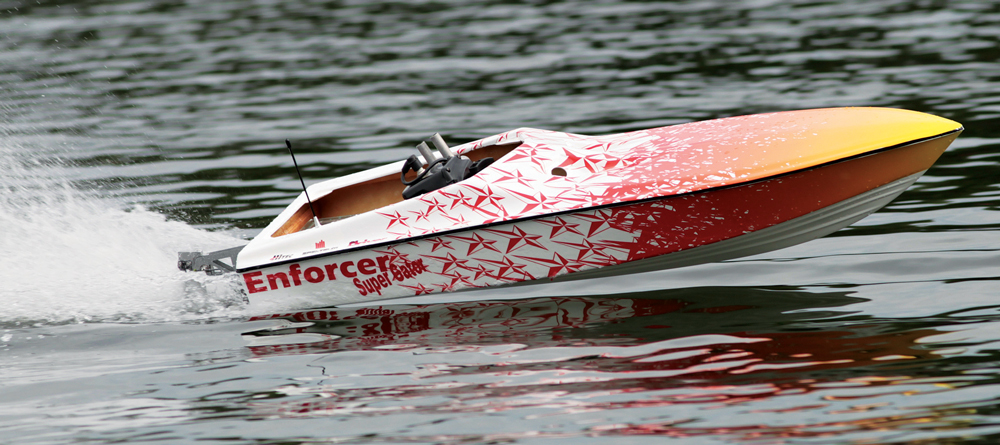
If you’re like me, you love the fact that you have an almost limitless set of adjustments to fine tune your RC car or truck for optimum performance both on the track and while bashing in the yard. Many people do not realize that you have the same flexibility when setting up an RC boat. In fact, there are many ways that you can change the performance and handling of a boat. In this article we are going to focus on adjusting the prop angle, trim tabs and balance to maximize both the top-end speed and steering performance.
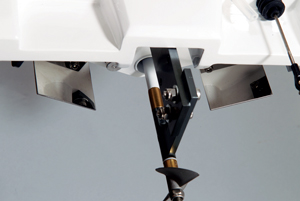
ADJUSTING THE PROP ANGLE
The angle that the propeller’s main shaft enters the water directly corresponds to how the hull will ride. Increasing the angle will cause the bow of the boat to make more contact with the water and conversely, a shallower angle will raise the bow out of the water more. There are a few things to consider when making this adjustment. First, you need to determine the water’s condition, i.e. choppy, or flat. When the water is flat and calm, decreasing the angle of the prop will tend to allow the boat to ride more on the transom, producing less drag and increasing the overall speed. This is referred to as “up trim.” If you add too much up trim the hull will start to porpoise in the water making it very difficult to control. If the water is more on the choppy side, it is usually better to increase the angle to apply “down trim” which will keep more of the hull in contact with the water, reducing the chance of capsizing, especially in the turns. If you add too much down trim, the steering will become overly sensitive and the bow will tend to dig into the water in the turns and possibly spin out or roll over.
On some boats there will be a bracket that supports the output shaft which can be adjusted by loosening a set of screws to achieve the desired results. Some boats have a fixed prop angle which will require you to make these trim adjustments using the trim tabs.
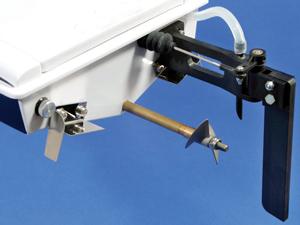
ADJUSTING THE TRIM TABS
Just about all performance boats that I have seen will have some sort of trim tabs mounted to the transom. They can have a dramatic effect on the handling and performance of your boat. Trim tabs come in different forms; some are simply made from a piece of metal that is bent and attached to the transom. Adjustments are made by simply adjusting the bend, moving the tab up or down. Others are more elaborate with a hinged tab and a turnbuckle to make the adjustments. Trim tabs function with the same effect as adjusting the prop angle whereas bending them up or down will cause the hull to raise and lower. Trim tabs can also stabilize your boat as it rides across the water’s surface. If you have an adjustable prop angle on your boat, you can utilize both adjustments and increase your prop angle to give you more “bite” and adjust the trim tabs to stabilize the hull. In a case where you have both options, it is better to use the prop angle to make major adjustments while using the trim tabs for fine tuning. In a case where you have a fixed drive system, your trim tabs are going to be the only way you can fine tune your boat.
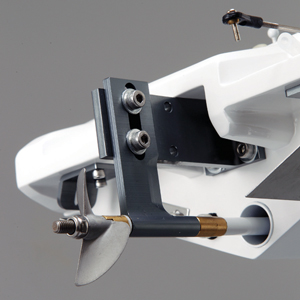
ARE YOU BALANCED?
On a full-scale boat, especially a pleasure boat, trim tabs are used to not only trim the hull for optimum performance, but they are also used to even out the side to side balance when there is more weight on one side of the boat than the other. In this manner they are used to adjust the boater’s comfort as no one wants to spend the day on the water leaning to one side. When it comes to model boats, there is never a situation where your lateral balance should not be even. You need to take every precaution when outfitting your boat to ensure that weight is evenly distributed. You can check this by picking up the boat from the point of the bow (for a v-hull) and by the center of the transom or even from the prop shaft. The closer you can get this to even, the better your boat will handle and the less work you will need to do when adjusting the trim tabs. Pay close attention to the manufacturer’s instructions to ensure you properly adjust the center of gravity (CG) and lateral balance.
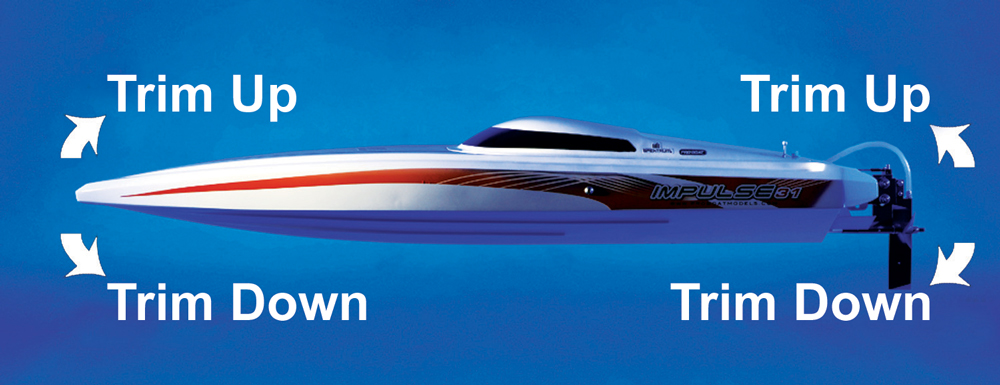
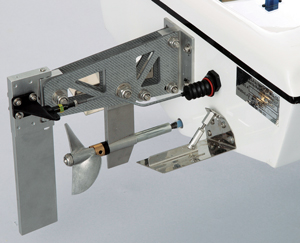
ADJUSTMENTS CAN BE AS SIMPLE AS REPOSITIONING THE BATTERY BACK
Radio control boating can be a very rewarding sport and understanding how to properly fine tune your model will greatly increase its handling and performance. I suggest only making single adjustments at a time and then testing them out to see how the boat reacts. Implementing too many changes at one time can leave you scratching your head wondering what is causing a specific reaction. It is also important to make all of your adjustments in minor increments as sometimes it only takes a minor change to make a big difference. Now it’s time to grab your boat and hit the water! Happy Boating!
 RC Boat Magazine The World's Leading Radio Control Boating Magazine
RC Boat Magazine The World's Leading Radio Control Boating Magazine
